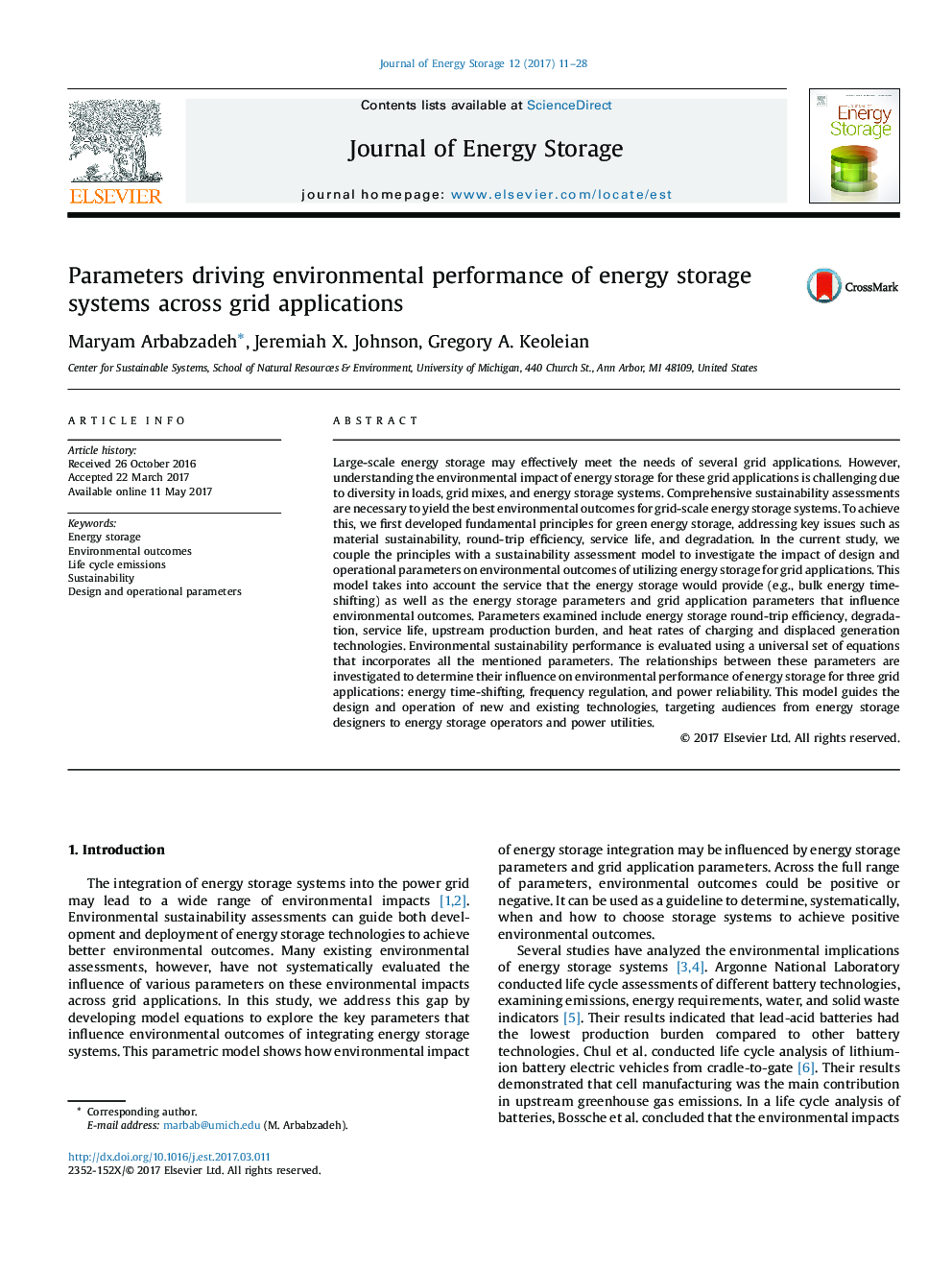| Article ID | Journal | Published Year | Pages | File Type |
|---|---|---|---|---|
| 5127283 | Journal of Energy Storage | 2017 | 18 Pages |
•We assess the impact of six parameters on environmental outcomes of energy storage.•Model equations are developed to characterize parameter interactions and dominance.•This model is applied to time-shifting, regulation, and reliability applications.•Efficiency and heat rates dominate in time-shifting and regulation applications.•Energy storage service life and production burden dominate in power reliability.
Large-scale energy storage may effectively meet the needs of several grid applications. However, understanding the environmental impact of energy storage for these grid applications is challenging due to diversity in loads, grid mixes, and energy storage systems. Comprehensive sustainability assessments are necessary to yield the best environmental outcomes for grid-scale energy storage systems. To achieve this, we first developed fundamental principles for green energy storage, addressing key issues such as material sustainability, round-trip efficiency, service life, and degradation. In the current study, we couple the principles with a sustainability assessment model to investigate the impact of design and operational parameters on environmental outcomes of utilizing energy storage for grid applications. This model takes into account the service that the energy storage would provide (e.g., bulk energy time-shifting) as well as the energy storage parameters and grid application parameters that influence environmental outcomes. Parameters examined include energy storage round-trip efficiency, degradation, service life, upstream production burden, and heat rates of charging and displaced generation technologies. Environmental sustainability performance is evaluated using a universal set of equations that incorporates all the mentioned parameters. The relationships between these parameters are investigated to determine their influence on environmental performance of energy storage for three grid applications: energy time-shifting, frequency regulation, and power reliability. This model guides the design and operation of new and existing technologies, targeting audiences from energy storage designers to energy storage operators and power utilities.
